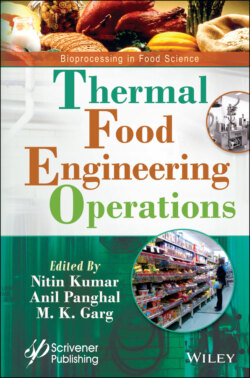Читать книгу Thermal Food Engineering Operations - NITIN KUMAR - Страница 21
1.3.1.3 Applications of IR Heating
ОглавлениеThere are wide applications for IR (infrared radiation) which include medical, paper industries dye, automobile, and others. Table 1.1 discusses the several application of IR heating [1]. In industrial applications, medium to long-range wavelengths seem to be beneficial, for all materials to be heated or dried give the largest absorption in the 3-10 mm region. Moreover, the applications in short waves are continuously evolving. Applications of IR are mostly within the area of food for drying and many other processes during the period from the 1950s to the 1970s from the Soviet Union, the United States, and the Eastern European countries. During the 1970s, much research was performed about industrial frying or meat products cooking and the utilization of near-infrared (NIR) techniques is initiated [28, 43]. In the 1970s and 1980s, several types of research were carried out to apply this technique in the sector of food, mostly at [Swedish Institute of Food and Biotechnology] and gained a set of knowledge. Recent work is experimental in nature and performed in Japan, Taiwan, and several other countries. Applications are mostly from areas such as dehydration, drying of vegetables, fish, rice, roasting of coffee, cocoa, and cereals, heating of floor, frying of meat, baking of pizza, biscuits, and bread, enzymes, and pathogens inactivation. Also, for thawing, blanching, sterilization, pasteurization of packing materials, and surface pasteurization, these techniques have been used.
The major effects on food involve the quick heating of food surfaces sealed in moisture and aroma compounds. Variation to components of food surfaces is equivalent to those that happen during baking.
